Training the 'Guard the Article' Exercise for KNPV
Ed's Note: The following article was written by a Dutch friend of mine. Bob Neijts has been involved with the KNPV sport for 15 years. I have intentionally not edited any of the article. While the English may not be correct, you will get the flavor of the people who train KNPV from this article.
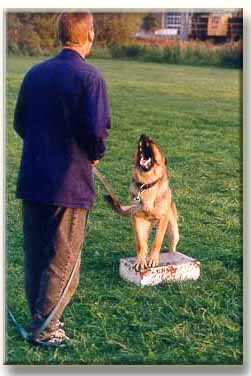
This exercise is not very hard to teach to dogs who have a natural desire to protect. Much more difficult is it to train dogs who have a lack of guard drive. Still every dog can learn it but to the second group it is going to take a little longer.
Let me tell you first how the exercise has to be done at a certification trial.
You place your dog at a place pointed out to you by the judge. You lay down your dog and place the object right in front of him (anything like a bag, coat, jacket). You wait for the signal of the judge and leave the field out of sight for your dog. After three minutes the helper appears. He will pass by in front of the dog at a short distance, app. 2 meters. He walks on for about 10 meters, then turns around and walks in right at the dog. The helper will try to take the object away. The dog has to prevent this by biting the helper. When the dog does this the helper will stop trying to take the object away and will make a few big steps backwards. The dog has to out without any command from his handler (still out of sight) and has to return to the object immediately (the dog is allowed to either stand, sit or lay down). Then the helper will leave the field again and at the signal of the judge you may pick up your dog.
Before you start training this exercise your dog has to know the basic obedience, like a long down stay, and also the beginnings of bite work.
You can use several different objects like a coat, a bag or jacket which the dog has to guard. As all exercises you start training this exercise step by step.
Step 1
The first thing you do is to train your dog a long down stay with the object right in front of him (the dog not on the object). You can use one of more people to get him used to distractions by making them walk in front, behind and around him. As soon as your dog is used to this and stays down the helper appears at least 20 meters distance. At this moment your dog is on a long leash and you are standing behind him at a short distance. Your dog will react on the helper and will try to get to him. You have to train your dog to stay in his place. If this is going well the helper will come closer and closer. Until he is able to pass right in front of the dog at a distance of about two meters. As your dog is not paying any attention to the helper, the helper can make some noise or move a little strange to get the dogs attention. At this point of training it is best to stand close to the dog or kneel next to him and give him all the support he needs. With a dog who is very aggressive towards the helper make sure that you calm him down before you move on with the training. The dog has to understand that he has to stay in place. Do not let the dog get a bite, it will take you right back to where you started.
Step 2
At this point you get to the bite work. The next time the helper is passing by he will stand still for a moment right in front of the dog. Here you need an helper who knows his job very well and who is able to "read" the dog. He has to be able to see what he should do next and to adjust his behavior to the dogs temperament. If the dog is trying to attack when the helper stops or when he is making movements with his arms or legs when he stands in front of the dog you have to calm down your dog and make him stay down! It is very important that the helper knows what to do and will stand absolutely still while you are handling your dog. As soon as the dog is down and under command he can move on and walk away. You have to repeat this as long as necessary until the dog stays in place without any command. Don't give the dog the change to bite because it will make it much more difficult to make him go down again! If it doesn't work go back to step one and increase the distance between your dog and the helper.
Step 3
When your dog stays in place and is paying attention to the helper you move on to the next step. First the helper is walking by, then he turns and walks back, again stopping in front of the dog. As the dog is quiet but pays attention to the helper, the helper steps out sideways towards the dog and kind of offering either his leg (when the dog prefers the leg) or his upper arm, biceps (when the dog prefers the arm). When the dog wants to bite the arm the helper has to turn the lower part of his arm on his back as much as possible to get an nice high bite on the biceps (maybe shoulder). He can also bend over a little bit (turning his head to other way!) to make it more easy for the dog and to make it a habit for the dog to bite here. While training this part of the exercise you again encourage your dog to pay attention to the helper. When the helper moves in you can also place the dog there where you want him to bite by forcing his head in a certain position or lift him up. This is only necessary when your dog has a little problem to target.
Step 4
As soon as your dog has a nice grip let him hold on for a minute, the helper makes a few steps backwards away of the object, then make him out on command (still the dog is on leash!) and the helper walks away. Right after the dog lets go of the helper bring him back to the object and make him go down. Sometimes it is very hard to make the dog return to the object and make him go down. Using a food reward can help here. While your dog is working the helper make somebody else place a small piece of food on the object. The dog will notice this right away. While he is eating make him go down and praise him. After a few times he will go straight to the object after he lets go of the helper to look for the food.
It does not matter if you keep doing this throughout the whole training but make sure your dog goes down! Repeat this part of the exercise maybe once or twice depending on how sharp your dog is. When your dog is very sharp, end the training of the exercise by making the helper pass by another time without allowing the dog to bite. When the performance of your dog is improving the helper starts walking towards the dog right after he turns. The dog has to wait before biting until the helper is at about 1 or 2 meters distance. If you have a dog who is not very sharp it is better to allow him to attack a little early otherwise he will maybe not attack at all because he thinks he is not allowed to because of the pressure you put on him by making him stay. You keep training this part of the exercise until your dog is able to wait until the helper is within striking distance, he outs on command and goes back to the object and goes down.

Step 5
In this part of the training you increase the distance and stop using verbal commands. You use a long line of 15 or 20 meters and start training the exercise while you are on the other side of the leash. When the dog starts playing around use the long line and give him some firm corrections. Also skip the verbal command to out and first watch what your dog is doing when the helper is walking backwards. If he needs a reminder pull the line firmly! If this works you do the same again but now you are moving out if sight for the dog (still using the long line). Stand behind a car, tree or whatever. Keep on training until everything goes well. If your dog is a little more sensitive and you have the change that he is getting afraid of you because of the corrections make somebody else do this. This way his fear or maybe aggression is not towards you but to the assistant.
Step 6
Now your dog is ready to do the exercise off leash and with the handler out of sight. Use the assistant to stand near the dog to give him a verbal correction when needed. (the use of the long line once in a while will do no harm!) Now it is time to do all the parts of the exercise right to make sure you loose no points at the certification trail. Use several assistants as judges and do everything by the book. Dogs are getting used to a fixed program very easily. To make sure your dog keeps attention make the helper pass by several times before he is moving for the object. Otherwise the dog will maybe attack as soon as the helper turns around. This exercise needs a lot of practicing to get all the points. Repeat it every training session even when the dog knows it all. Do not forget to go to as much as possible different locations and clubs and use all the helpers you can find. The result is worth all the effort.



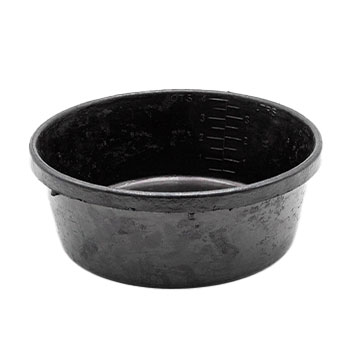
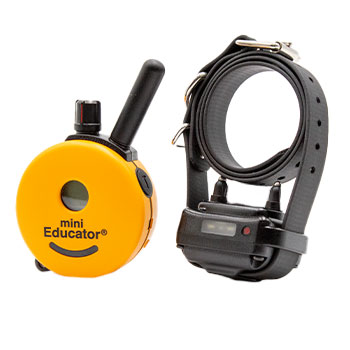
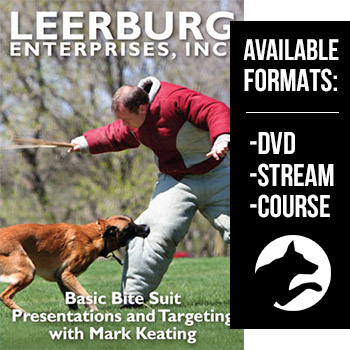
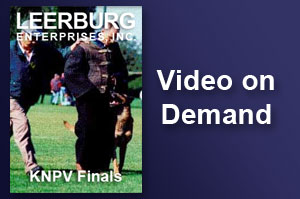
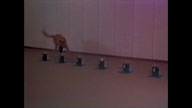
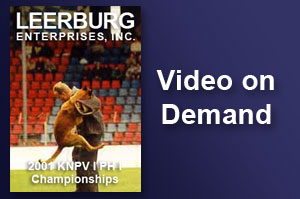
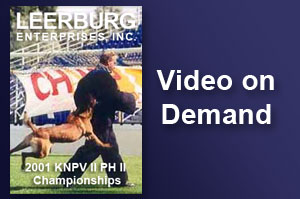
Ask Cindy.